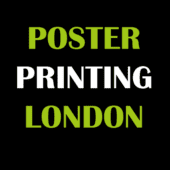How to Make a Research Poster: A Comprehensive Guide
Creating a research poster is an essential skill for effectively communicating your research findings at conferences, seminars, and other academic gatherings. This guide will take you through the steps of creating a research poster, from planning and design to presenting it. Additionally, we will provide insights into writing a conclusion for your poster to leave a lasting impression on your audience.
Introduction
A research poster is a visual representation of your research study. It is designed to communicate your research objectives, methodology, results, and conclusions succinctly and attractively. A well-crafted poster can engage your audience and facilitate meaningful discussions about your work.
Planning Your Research Poster
- Understand the Requirements: Check the specific guidelines provided by the conference or event organizers. This includes size dimensions, layout preferences, and any mandatory sections.
- Define Your Key Message: Determine the main point you want to convey through your poster. This should be clear and focused, as you have limited space to communicate your research.
- Gather Your Content: Collect all necessary information, including your abstract, introduction, methodology, results, and conclusion. Make sure to also include figures, tables, and images that effectively illustrate your findings.
Designing Your Research Poster
- Title and Authors: Your title should be concise and informative. List the authors and their affiliations below the title.
- Layout: Organize your poster into sections such as Introduction, Methods, Results, Discussion, and Conclusion. Use headings and subheadings to guide the viewer through your poster.
- Visuals: Use graphs, charts, and images to make your poster visually appealing. Ensure all visuals are high quality and relevant to your content.
- Text: Keep text to a minimum. Use bullet points and short paragraphs. Make sure the text is large enough to read from a distance (generally, 24-32 point font for body text).
- Color Scheme: Use a consistent and professional color scheme. Avoid using too many colors, which can be distracting.
- White Space: Don’t overcrowd your poster. White space helps to prevent your poster from looking cluttered and makes it easier to read.
Writing the Conclusion
The conclusion of your research poster should succinctly summarize the main findings of your study and their implications. Here’s how to craft an effective conclusion:
- Summarize Key Findings: Highlight the most important results of your research. Be specific about what you discovered.
- Implications: Discuss the significance of your findings. Explain how your research contributes to the field and what the potential applications are.
- Future Directions: Mention any future research that could be conducted to build on your findings. This shows that your research has opened new avenues for exploration.
- Call to Action: If applicable, suggest actions that could be taken based on your research. This could be further research, practical applications, or policy changes.
Example Conclusion for a Research Poster
Conclusion
In this study, we demonstrated that the new drug formulation significantly reduces symptoms in patients with chronic pain. Our results showed a 40% improvement in pain scores compared to the placebo group (p < 0.01). These findings suggest that the new formulation is both effective and safe for long-term use. Future research should focus on large-scale clinical trials to confirm these results and explore potential side effects. Our work provides a promising new avenue for chronic pain management and highlights the need for continued innovation in this area.
Presenting Your Research Poster
- Practice Your Presentation: Prepare a short summary of your poster that you can present in about 3-5 minutes. Practice delivering it clearly and confidently.
- Engage with Your Audience: Be prepared to answer questions and engage in discussions. Be open to feedback and ready to explain your research in more detail if asked.
- Handouts: Consider providing handouts with more detailed information about your research for those who are interested.
Conclusion
Creating a research poster involves careful planning, clear and concise design, and effective communication of your research findings. By following these guidelines, you can create a poster that not only showcases your work but also engages and informs your audience. Remember, the goal of your poster is to facilitate understanding and discussion, so clarity and simplicity are key.
